The Factory Setting a New Standard for Denim Production in Los Angeles
Using the most high-tech machinery available, this smaller version of Saitex's Vietnam facility makes jeans for Everlane and other brands that prioritize sustainability.
Welcome to Factory Tour, where we take you inside the manufacturing facilities of some of our favorite brands to reveal how the clothes we buy are actually made. Next up: Saitex L.A., an innovative, sustainability-focused factory that produces denim locally for brands like Everlane and Madewell as a complement to its Vietnam headquarters (which we toured as well).
When Everlane launched denim in 2017, it was a pretty big deal. Though the brand had been selling its ethically-made, affordable, minimal basics online for six years by then, its sustainable ethos and direct-to-consumer business model were still novel; consumers and industry professionals alike were eager to watch the innovative company's every move. Its expansion into denim — which is famously expensive, wasteful and polluting to manufacture — was no exception.
Somehow, Everlane managed to launch a collection of jeans for only $68 a pair with minimal environmental impact. That news put its factory, Vietnam's Saitex, on the map.
Founded in 2012 by Sanjeev Bahl and now commonly referred to as the "cleanest denim factory in the world," Saitex is famous for its water recycling system and renewable energy sources (among other exceptionally efficient technology), as well as its laundry list of ethics-centric certifications, including B Corp, Fair Trade, LEED and Bluesign. Its vertically-integrated facilities now spread across 22 cubic acres in Ho Chi Minh City, mass-producing denim for Everlane, Madewell, J.Crew, Silvrlake, Mara Hoffman and many more. In 2021, Saitex opened its first factory outside of Vietnam in — where else? — Los Angeles, the unofficial heart of the American denim industry.
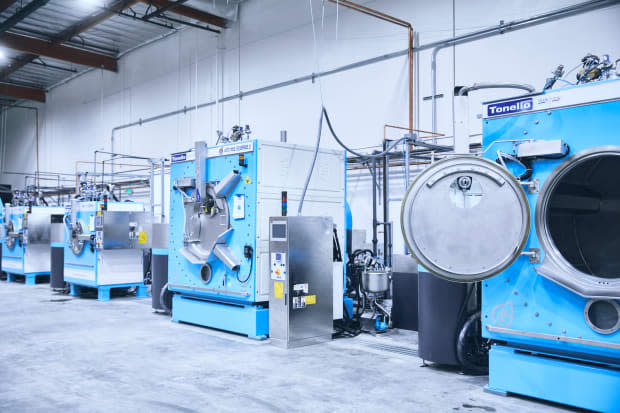
Photo: Courtesy of Saitex
Even as most U.S. apparel manufacturing has moved overseas, there's still denim being produced in and around downtown L.A. (Citizens of Humanity and AG, for instance, operate their own facilities.) But Saitex is the first of its kind here in many ways: It's the only vertically-integrated factory servicing multiple brands, the only factory using 98% recycled water and the only factory with robot sprayers. (More on those later.)
Five years after Everlane debuted denim, its commitment to environmental responsibility can almost be seen as simply a modern way of doing business, rather than some revolutionary concept. In the same spirit, Saitex boasts less about sustainability than it does its truly state-of-the-art, futuristic, automated machinery, much of which can't be found anywhere else in the country and equates to unparalleled efficiency. It's, simply, a modern way of making denim.
"Blindsided" by the pandemic and unable to bring in anyone from Vietnam due to travel restrictions, Saitex's USA President Kathy Kweon spent all of 2020 turning a "dark, dirty, tired warehouse" into a bright, modern facility using plans provided by a Vietnam-based team who "don't know anything about L.A. regulations."
"It was literally a few of us contacting local contractors, the city, gas, electric... It was a process," she says.
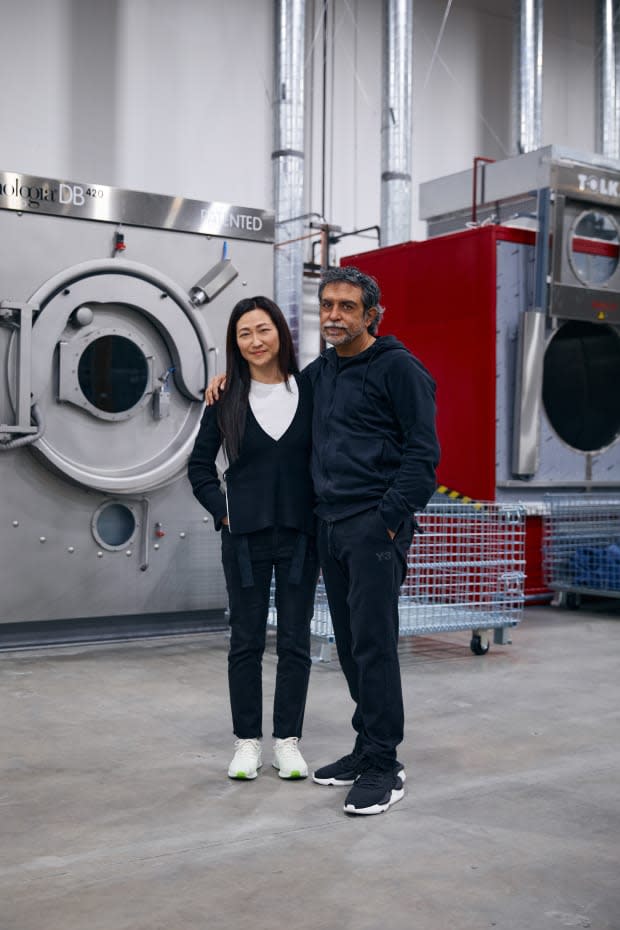
Photo: Courtesy of Saitex
There are a few key differences between the L.A. and Vietnam factories. The biggest is size. L.A.'s 52,000 square feet, 200 employee and 1,200-pieces-per-day production capacity might sound huge, but it's really a "miniature" version, as Kweon puts it, of Vietnam's multiple facilities employing more than 4,500 people and producing over 20,000 pairs of jeans per day.
Already, though, Saitex USA has expanded into a 10,000-square-foot space across the street to house its fabric, some of which comes from Saitex's own mill in Vietnam, which opened earlier this year.
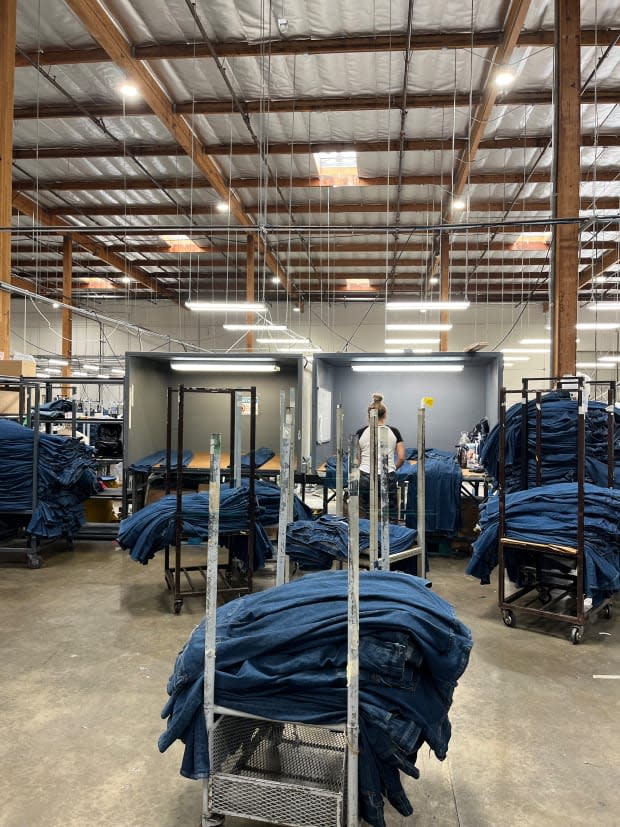
Photo: Dhani Mau/Fashionista
Everlane was one of the first brands to transfer some of its production over from Vietnam to the new facility. In July, the brand launched a "made in L.A." denim capsule. Larger brands like Everlane and Madewell can use the L.A. factory to produce limited-run offerings like this with a fast turnaround, while continuing to have larger quantities produced in Vietnam. Or, they can test a new style with a small, locally-made run and then scale it up in Vietnam if it performs well. The USA factory is also suitable for independent brands with smaller distribution; those that want to develop samples without having to travel between separate facilities for fabric, cutting, sewing, washing and finishing; and those that simply want to say their denim is made in the U.S. (Saitex also manufactures its own brand, Edwin USA.)
Both factories have in-house water recycling and use 98% recycled water, but due to differing regulations, L.A.'s water isn't quite clean enough to drink post-laundry. (Legend has it, Vietnam's is, and Bahl is still alive to prove it.) Also, due to the facility's construction, jeans can't be hung to air dry in L.A. the way they can in Vietnam.
Raw denim typically begins its journey through the factory at one of the two SEI laser machines (the only two like it in the world). On a connected computer, an employee simply programs the specifications for the style being produced during that run, and with the press of a button, lasers cut large swaths of fabric into 14 to 18 perfect pieces that together make up a pair of jeans. (These lasers can also add fading details and other designs, like the "Everlane Los Angeles" printed onto the waistbands of the brand's L.A. capsule.) There's also a hand-cutting station for clients who prefer a more traditional approach. As Kweon puts it: "A lot of L.A., they're not really familiar with the automated machines that are brand-new, so we have to provide the hybrid type of work."
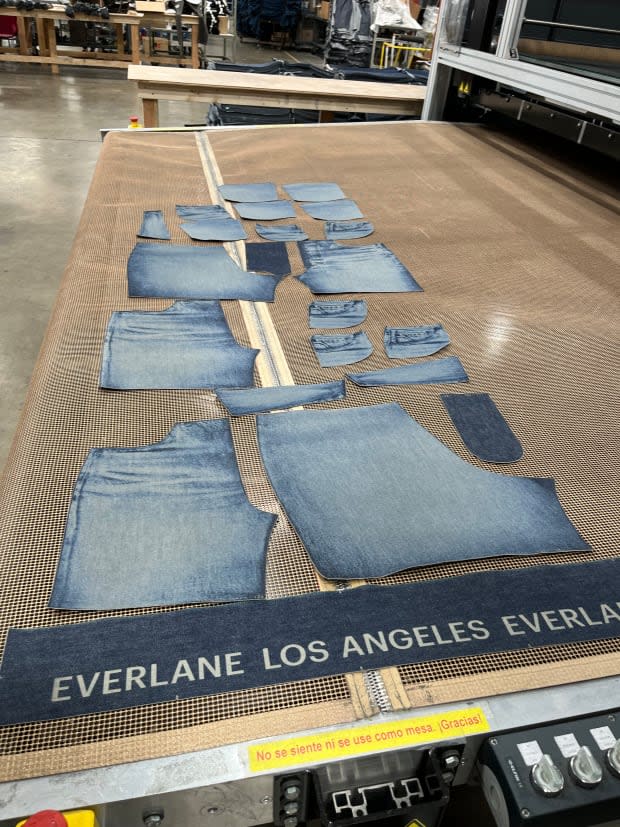
Photo: Dhani Mau/Fashionista
These pieces then make their way down a production line, where they pass through 45 to 55 stations, each one operated by someone who specializes in that specific maneuver — i.e. joining the flies or attaching the back pockets — until the waistband is attached and the hems are done. The assembled pair of jeans is checked for quality and consistency, and waits to be treated and washed.
Meanwhile, a second production line handles all non-jean construction: denim jackets, shirts, dresses and so on. Another section of the facility handles sample-making. There, instead of a production line, one person takes ownership of the entire process.
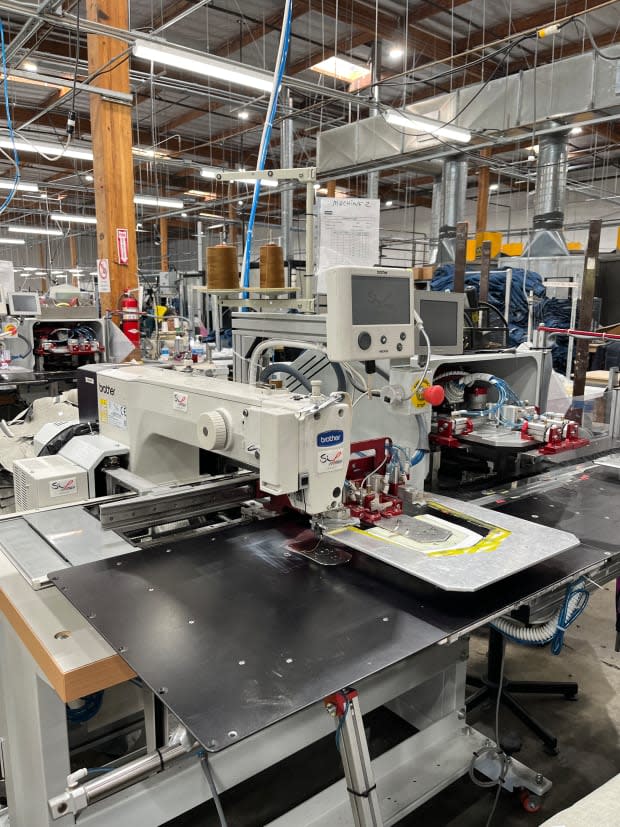
Photo: Dhani Mau/Fashionista
When it comes to making denim, it's all about the laundry. That's where jeans get their hue or "wash." It's how they become soft. And, traditionally, it's where thousands of gallons of water are mixed with toxic chemicals and sent right down the drain — repeatedly.
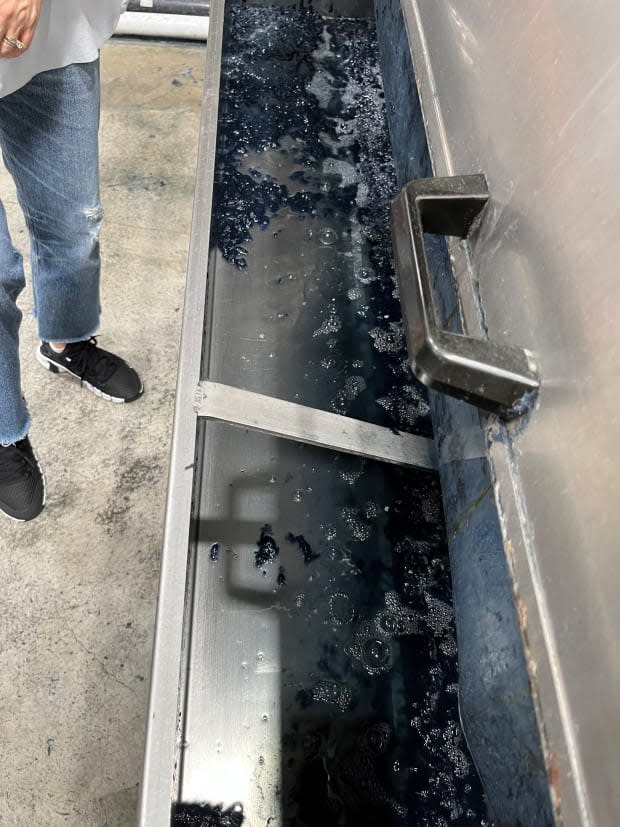
Photo: Dhani Mau/Fashionista
By investing in the newest machinery, Saitex has made this process more efficient in more ways than one. While most facilities separate laundry from sewing and other operations, Saitex does it all on the same floor; it's able to do this in part because its process is so much cleaner and more efficient than most.
Instead of the three separate machines for stone washing, chemical treating and ozone cleaning that traditional facilities use, Saitex is living in 2032 with its three-in-one machine that combines all three steps into one drum that can wash up to 250 pairs of jeans at a time in two to four hours. It saves water, labor, time and chemicals.
Saitex also invests in safer, Bluesign-approved alternatives to the toxic chemicals used in traditional denim manufacturing, which is one reason it's able to safely house its laundry inside the main factory. Another is the way the water recycling system is set up, which is impressive even to an industry veteran like Kweon.
"In traditional laundries, all this equipment has to stay outside because it's a very bad odor," she says. "I've never seen this type of equipment prior to this place; we have everything inside, and you don't smell anything because of the chemical system we have."
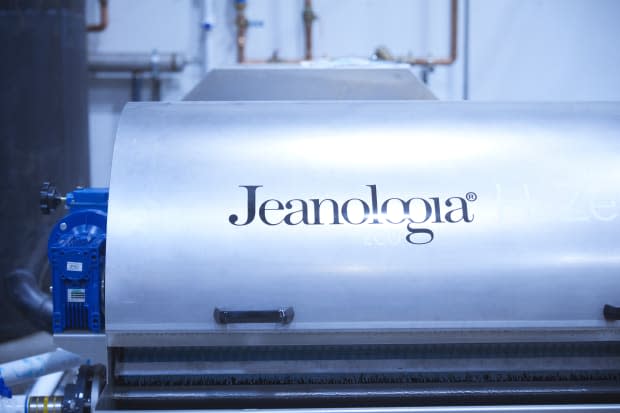
Photo: Courtesy of Saitex
One of the biggest challenges in opening the factory was getting permits for the water recycling system, simply because it hadn't been done before.
"The city didn't believe us in the beginning," says Kweon. "They had never heard of it, never seen it."
The washing machines are all connected to a drain where the remnants enter another machine that automatically separates the water from the blue "sludge" (which is basically what it sounds like). The water is then filtered again before it travels through the water-cleaning system just underground. The cleaned water is then stored in a large tank for its next use. The tank is replaced with fresh water only once a month; the filter is cleaned every Sunday. Leftover "sludge" is dried, compacted and sent to a recycling facility. (At the Vietnam factory, which produces a lot more sludge, it's upcycled into insulation.) Since air drying isn't possible, Saitex USA uses highly energy-efficient dryers.
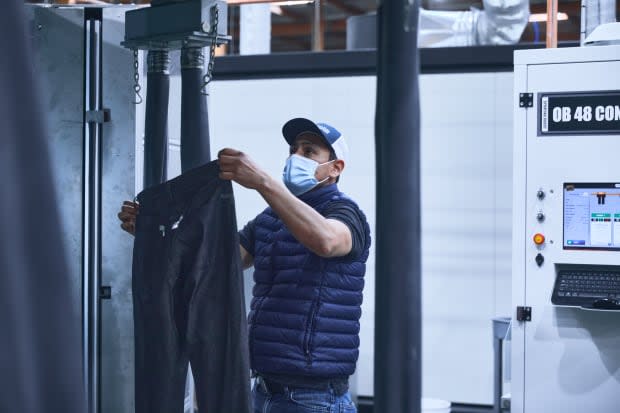
Photo: Courtesy of Saitex
While some styles go straight from sewing to washing to drying, others may require additional steps in between, which is where some of the factory's most mind-boggling machinery comes into play. Detail work that would traditionally be done by hand is automated; many involve an apparatus that comprises two long, straight balloons that inflate to fill out a pair of jeans.
A grinding machine takes the place of someone manually rubbing fabric with sandpaper to add distressing; it can be programmed to grind with the desired intensity. A 3-D machine can be used after a base wash to put creases into jeans for a lasting, three-dimensional whiskering effect; the "creased" jeans are then put into an oven that effectively bakes in the whisker.
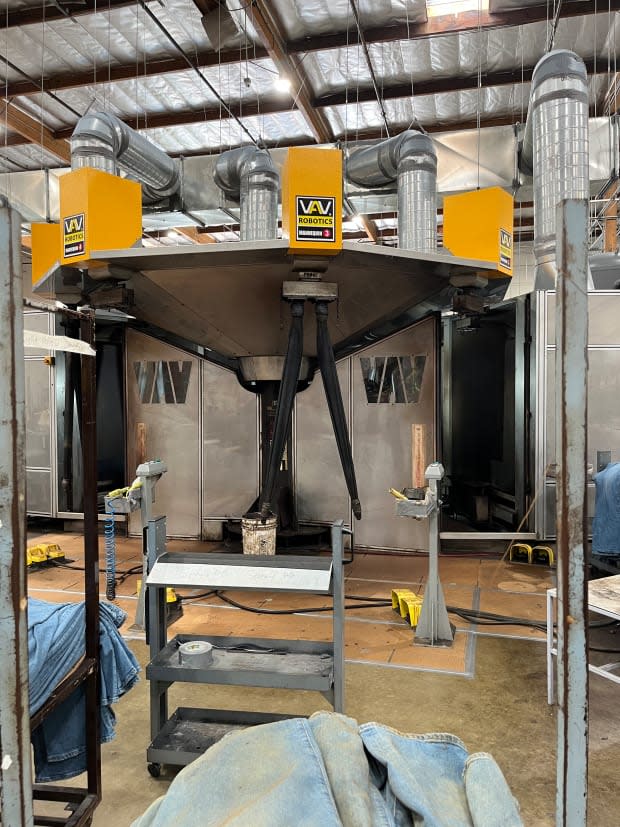
Photo: Dhani Mau/Fashionista
I was most impressed by the "automated robot machine," as Kweon calls it: One time-honored method of denim fading involves strategically hand-spraying a chemical onto specified parts of the jeans — but this machine automates that process for multiple pairs at once.
Jeans are placed onto the aforementioned "balloons" on the outside of the machine and are then rotated inside like a merry-go-round. There, a series of robot arms do the spraying. Not only are these robots programmed to achieve the client's desired effect, there's also an AI function wherein a human deemed to be the "best sprayer" is recorded in a separate machine, and that information is used to program the robot so that it uses the exact same spraying technique.
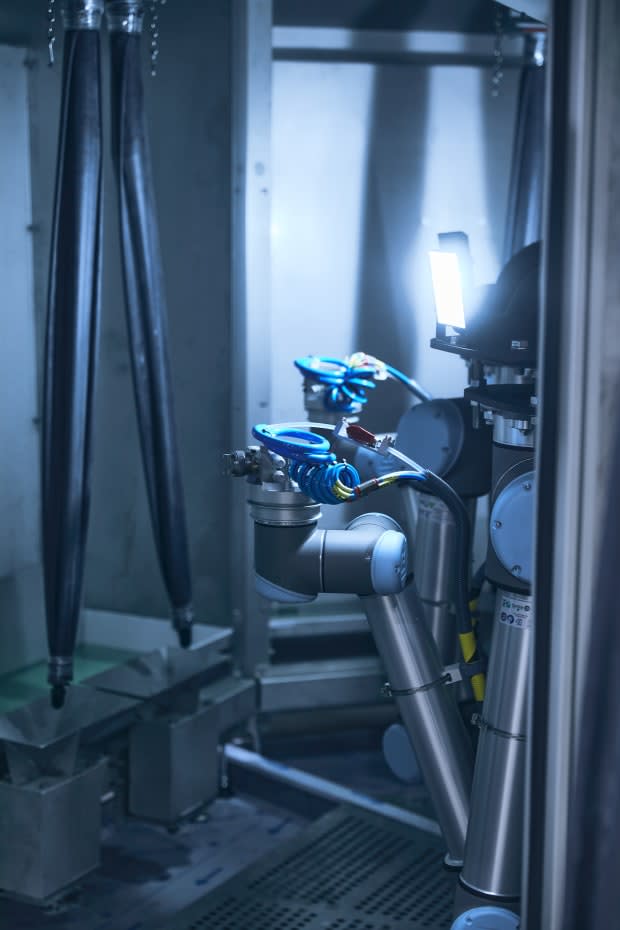
Photo: Courtesy of Saitex
After washing and drying, jeans head to the finishing area for labels, tags, more quality checks and pressing — they can be de-wrinkled almost instantly by an automated steamer machine — before being packaged and prepared to ship.
At the end of my tour, it wasn't some exceptional devotion to sustainability that left the biggest impression: I was most taken aback by all the futuristic, incredibly efficient technology — both its existence, of which I had no idea, and Saitex's investment in it. Instead of preaching some altruistic rhetoric about saving the planet, Saitex prefers to lead by example, showing the industry what a modern supply chain can look like.
"We don't highlight too much about sustainability because we feel like that's a must for everybody," says Kweon.
While this way of manufacturing should be standard, it would be prohibitively expensive for most existing factories to get on Saitex's level.
"Smaller factories, even if they want to advance, the machines are very expensive," she says. And Saitex can only produce so much in its small-ish, continuously-booked U.S. location. While nothing's been confirmed, it feels safe to expect that expansion is on the horizon.
"To scale," Kweon says, "we need to be bigger."
